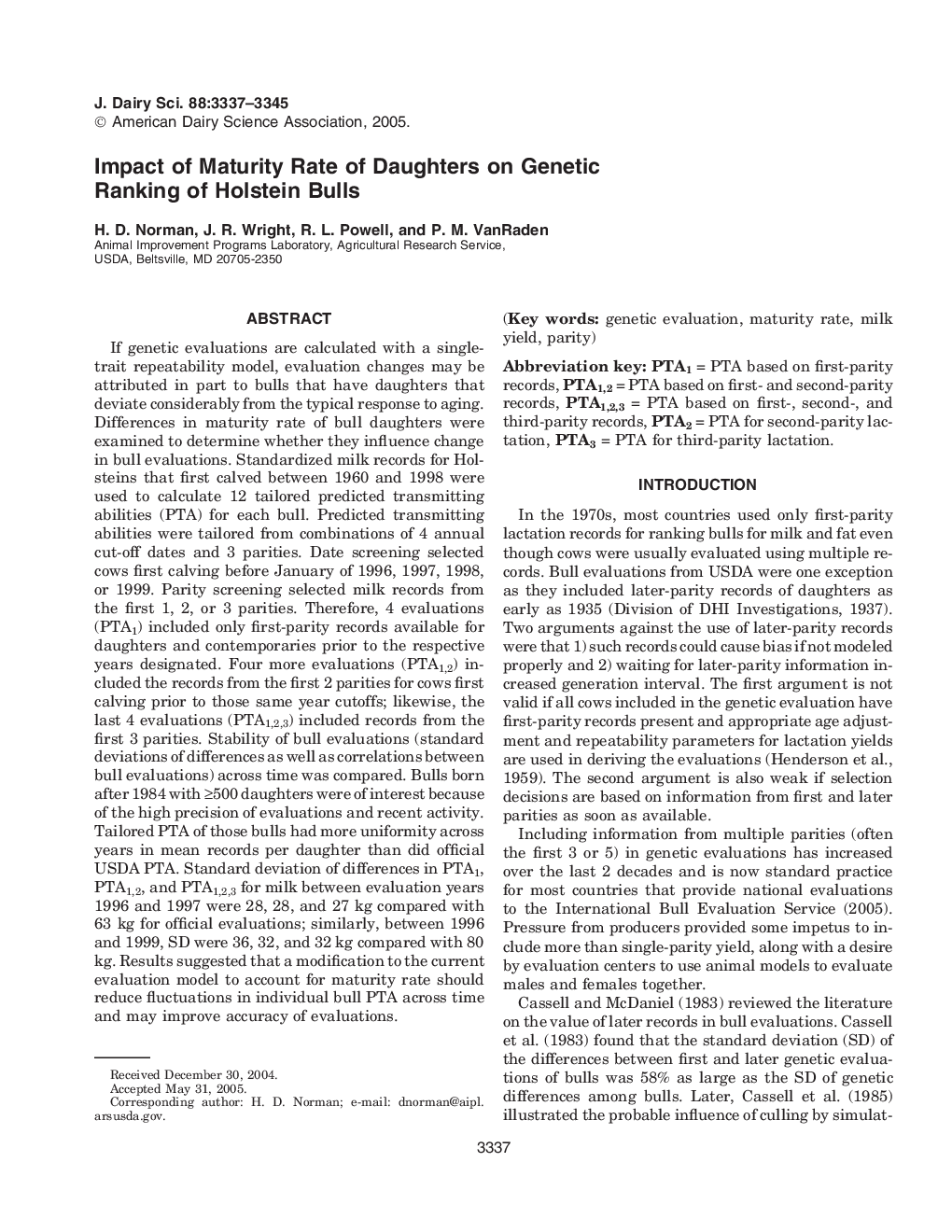| Article ID | Journal | Published Year | Pages | File Type |
|---|---|---|---|---|
| 2441435 | Journal of Dairy Science | 2005 | 9 Pages |
Abstract
If genetic evaluations are calculated with a single-trait repeatability model, evaluation changes may be attributed in part to bulls that have daughters that deviate considerably from the typical response to aging. Differences in maturity rate of bull daughters were examined to determine whether they influence change in bull evaluations. Standardized milk records for Holsteins that first calved between 1960 and 1998 were used to calculate 12 tailored predicted transmitting abilities (PTA) for each bull. Predicted transmitting abilities were tailored from combinations of 4 annual cut-off dates and 3 parities. Date screening selected cows first calving before January of 1996, 1997, 1998, or 1999. Parity screening selected milk records from the first 1, 2, or 3 parities. Therefore, 4 evaluations (PTA1) included only first-parity records available for daughters and contemporaries prior to the respective years designated. Four more evaluations (PTA1,2) included the records from the first 2 parities for cows first calving prior to those same year cutoffs; likewise, the last 4 evaluations (PTA1,2,3) included records from the first 3 parities. Stability of bull evaluations (standard deviations of differences as well as correlations between bull evaluations) across time was compared. Bulls born after 1984 with â¥500 daughters were of interest because of the high precision of evaluations and recent activity. Tailored PTA of those bulls had more uniformity across years in mean records per daughter than did official USDA PTA. Standard deviation of differences in PTA1, PTA1,2, and PTA1,2,3 for milk between evaluation years 1996 and 1997 were 28, 28, and 27 kg compared with 63 kg for official evaluations; similarly, between 1996 and 1999, SD were 36, 32, and 32 kg compared with 80 kg. Results suggested that a modification to the current evaluation model to account for maturity rate should reduce fluctuations in individual bull PTA across time and may improve accuracy of evaluations.
Keywords
Related Topics
Life Sciences
Agricultural and Biological Sciences
Animal Science and Zoology
Authors
H.D. Norman, J.R. Wright, R.L. Powell, P.M. VanRaden,
